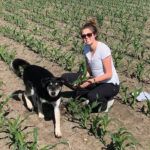MarketsFarm — As the market grapples with new planting projections from Statistics Canada, one thing was abundantly clear to MarketsFarm Pro analyst Mike Jubinville: this canola forecast isn’t enough to rectify tight ending stocks. In StatsCan’s survey-based principal field crop areas report, released Tuesday, the federal agency pegged canola acres for 2021-22 at 21.53 million,












